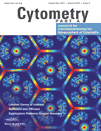|
Purpose:
|
Plasmodium falciparum is responsible for the majority of deaths associated with malaria. Naïve hosts are most susceptible to life-threatening disease but the risk of severe malaria rapidly declines in endemic settings (often after just one or two infections). What mediates this initial susceptibility and subsequent protection is not understood but appears independent of parasite density, suggesting a host-mediated mechanism. We recently developed a human rechallenge model of falciparum malaria to track the host response to the first three infections of life. In this way, we could examine host adaptations that might provide protection against severe malaria. In this experiment, we present CyTOF data exploring the T cell response to a first-in-life P. falciparum infection (three volunteers - v313, v315, v320) versus rechallenge (third infection, six volunteers - v301, v304, v305, v306, v308, v310). All volunteers were drug-treated at the same parasite density (approx. 10,000 parasites per ml). Note that time-matched RNA-sequencing data from whole blood and flow-sorted T cell subsets are also available from this volunteer cohort (NCBI’s Gene Expression Omnibus superseries accession no. GSE172481). |
|
Conclusion:
|
Infection of naïve and malaria-experienced hosts led to significant lymphopenia, which fully resolved within six days of drug treatment (and parasite clearance). At this timepoint, a first-in-life infection led to massive T cell activation across all lineages (including diverse CD4, CD8, gamma delta, MAIT and regulatory T cells) culminating in 20-40% of the peripheral T cell pool exhibiting an activated (CD38hi Bcl2lo) phenotype. Surprisingly, this response included features of T cell activation previously associated with tissue pathology in autoimmunity and exceeded the already high levels of T cell activation during a first-in-life P. vivax infection (see https://doi.org/10.1101/2021.03.22.21252810). Despite comparable levels of lymphopenia in third infection only 10% of peripheral T cells were activated after parasite clearance (range 5.2-14.5%). This attenuated response was evident in all T cell lineages but was particularly pronounced in conventional CD4 T cells. Significantly, phenotypes associated with tissue damage were essentially absent upon reinfection. Parasite density was identical in first and third infection, ruling out a difference inantigen load as an explanation for this rapid change in T cell activation. Furthermore, parameters of systemic inflammation (inc. plasma proteins and whole blood RNA-sequencing) revealed no change in myeloid cell activation. These data suggest that changes intrinsic to T cells or the tissue niche to which they are recruited must be responsible for the attenuation of T cell activation in malaria-experienced hosts.
|
|
Comments:
|
Staining and acquisition was performed at the MRC Weatherall Institute for Molecular Medicine in Oxford, UK, in collaboration with Michalina Mazurczyk and Giorgio Napolitani. CyTOF was used to resolve changes in the peripheral T cell pool through time in eight volunteers (named v301, v304, v305, v306, v308, v310, v313, v315, v320). Demographic information of this cohort is shown in a spreadsheet attached to this experiment. Each volunteer was sampled at four timepoints: baseline (one day before infection), DoD (day of diagnosis, immediately before treatment), T6 (six days post-treatment) and C45, 45 days post challenge (~30 days post treatment). The filename contains both the timepoint and individual from whom the sample was taken (the prefix "vac63c" present in some files can be safely ignored, but should be removed when using the supplied metadata for import into a SingleCellExperiment, for example). FCS files were generated using CyTOF software (version 6.7, Fluidigm). Singlet T cells were were gated using Cytobank, all further processing and analysis was carried out in R. Bead normalisation (Finck et al., 2013 Cytometry Part A), debarcoding (Zunder et al., 2015 Nature Protocols) and compensation (non-negative least-squares (NNLS) Chevrier et al., 2018 Cell Systems) were performed using the CATALYST workflow described in Nowicka et al. (209 F1000 Research). https://www.bioconductor.org/packages/release/bioc/html/CATALYST.html
FlowSOM metaclustering and manual merging were used to classify T cells into unique subsets. For differential abundance and phenotype analysis edgeR and limma GLMs implemented in the diffcyt package were used. https://www.bioconductor.org/packages/release/bioc/html/diffcyt.htmlThis repository contains fcs files that have been pre-gated on CD45+CD3+ singlet T cells (see the attached gating XML). Ungated whole blood will shortly be uploaded to a separate experiment. Should this be of interest to you ahead of publication, please get in touch and we will be happy to share.
|

